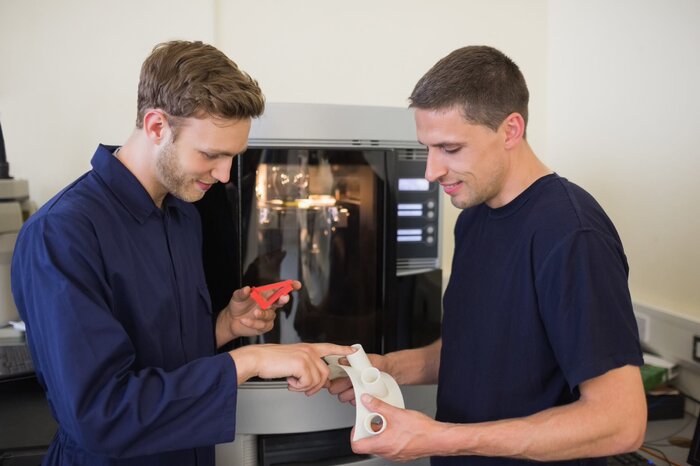Cooperative 3D Prototyping
Compared to exciting manufacturing, 3D-printed components are usually not homogeneous because they have honeycomb structures or other air inclusions that cannot be seen on the finished product. Subsequent inspection of the printed layers is difficult, so a laser scanner records the corresponding surface after each layer. A comparison between this and a reference model provides information about the quality of the part and whether it meets the original requirements (e.g. mechanical load). The result of this comparison is also displayed in the build space during the printing process, allowing users to decide whether to change parameters (e.g. feed, temperature or speed) or to stop printing altogether in the event of any problems. In addition, each part gets an inspection report that ensures it meets the requirements.
The research centre User Centred Technologies of the FHV - Vorarlberg University of Applied Sciences is lead partner in the work package Quality Assurance and Print Process Monitoring. The research setup here focuses on a comprehensible presentation of the results in order to be able to offer all stakeholders (from design to final assembly) as much support as possible from the technology in their respective steps.
The ABH081 project is also concerned with the transfer of licensed data packages (lead partner: DHBW Lörrach) and the development of new business models (lead partner: ZHAW) in 3D printing. An exemplary setup, which is to cover all corresponding areas, is available with an art object.

Project partner
- AM Network (CH)
- ABB Switzerland AG (CH)
- Bavaria Innovative (D)
- Business Upper Austria GmbH (A)
- dekom 3D plus GmbH (CH)
- Duale Hochschule BW (D)
- E. Blum & Co. AG (CH)
- Fabru GmbH (CH)
- General Electric GmbH (CH)
- Hightech Center Aargau AG (CH)
- Landratsamt Waldshut (D)
- Leichtbau BW GmbH (D)
- Multec GmbH (D)
- Swiss Materials Schaffhausen (CH)
- ZHAW School of Management and Law (CH)
Funding
The 3D printing project is funded by the Interreg program "Alpenrhein-Bodensee-Hochrhein", whose resources are provided by the European Regional Development Fund (ERDF) and the Swiss Confederation.
